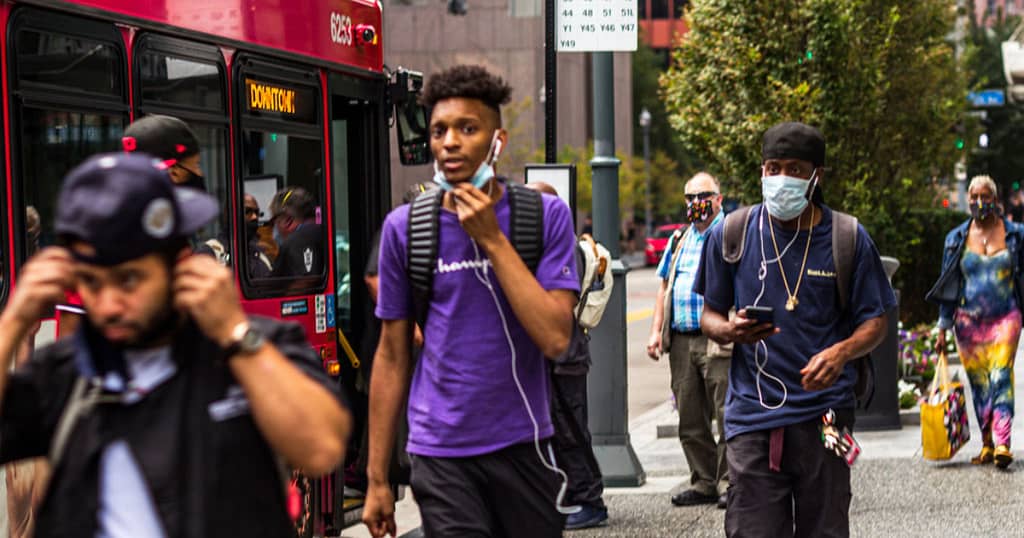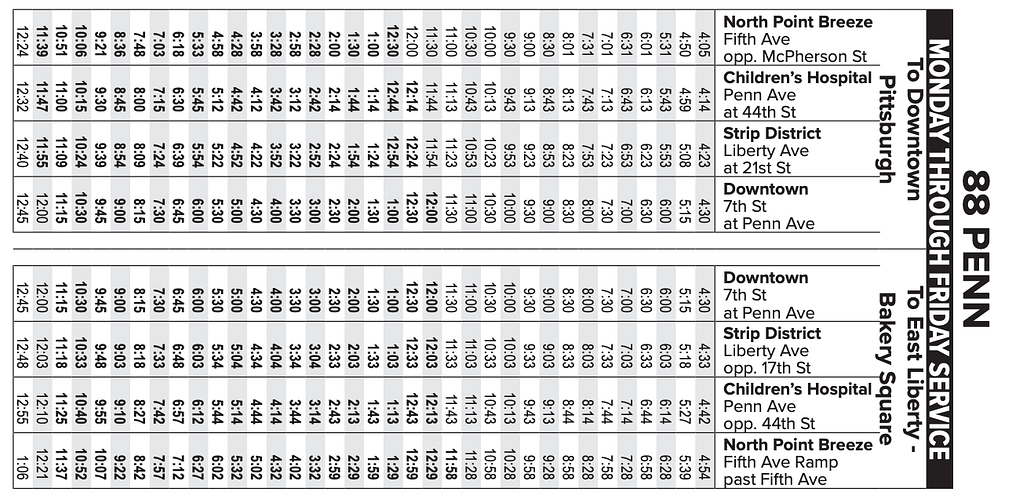
Reducing Timepoints on Route Schedules Does Not Increase Schedule Reliability. Instead, it Lowers PRT Scheduling Accountability and Leaves Riders Out in the Cold for Longer.
We need a timepoint for every neighborhood and one for every transfer point.
Transit service in Allegheny County is in crisis. As our forthcoming report Representing our Routes will explain, 38 out of Pittsburgh Regional Transit’s (PRT’s) 105 routes experienced a month or more of service reliability of 50% or less in 2022. That’s appalling.
Riders have been testifying at PRT board meetings and rallying in the streets over the past year to highlight the need for PRT’s schedules to accurately reflect the run times for routes. Riders are regularly left waiting for buses that never arrive or routinely arrive late, causing them to miss work, doctor’s appointments and other critical needs. Transit operators are pressured into foregoing bathroom breaks and unfairly targeted by frustrated passengers because of route schedules that do not accurately reflect the time it takes to drive the route.
PRT has just announced February’s quarterly service changes, which we hoped would be revised to accurately reflect the run times to make the service better for riders and transit workers both. Instead, on 9 of the 16 service trip time adjustments proposed, PRT is going to reduce timepoints on the schedule.
Let’s be clear: reducing timepoints is not the same as increasing service reliability.
Removing timepoints makes it much harder for riders to know when a bus will arrive in their neighborhood, or when/if they can make transfers between lines. With longer gaps between timepoints in the schedule, riders have to consider a larger window of time and greater uncertainty for when buses will arrive at the stops between timepoints. For instance, starting in February, the 88 Penn will only show 4 (!) stops or time points on the schedule- North Point Breeze, Children’s Hospital, Strip District, and Downtown. That means that riders in East Liberty, Friendship, and Garfield have no specific time named for when the 88 bus will arrive at their stops, and have a large window in which the bus might theoretically arrive. This will also make planning ahead for trips with transfers exceedingly difficult because route planning relies on riders being able to compare stop times on two or more published schedules (the timepoint at Negley/Penn was removed, which is an important transfer point to the 71s, 77, and 87).

We also worry that removing timepoints shifts responsibility for timeliness and issues with missing the bus from PRT to the riders. Fewer timepoints lowers accountability for PRT by lowering the visibility of their erratic or poor on-time performance. With fewer timepoints, PRT will track fewer data points around whether their service is performing up to standard.
The worst part is that PRT can adjust schedules based on the real-time data of how long it takes for buses to arrive at stops, but despite having accurate data, the schedule planning department has not made any adjustments! (See Transit Scheduling Director Philip St. Pierre’s response about the Uptown service in response to Board member Ann Ogoreuc in the 1/19/23 PRT Board Committees meeting, at min. 20.25) This would improve service reliability dramatically, particularly in corridors where there is construction causing service delays.